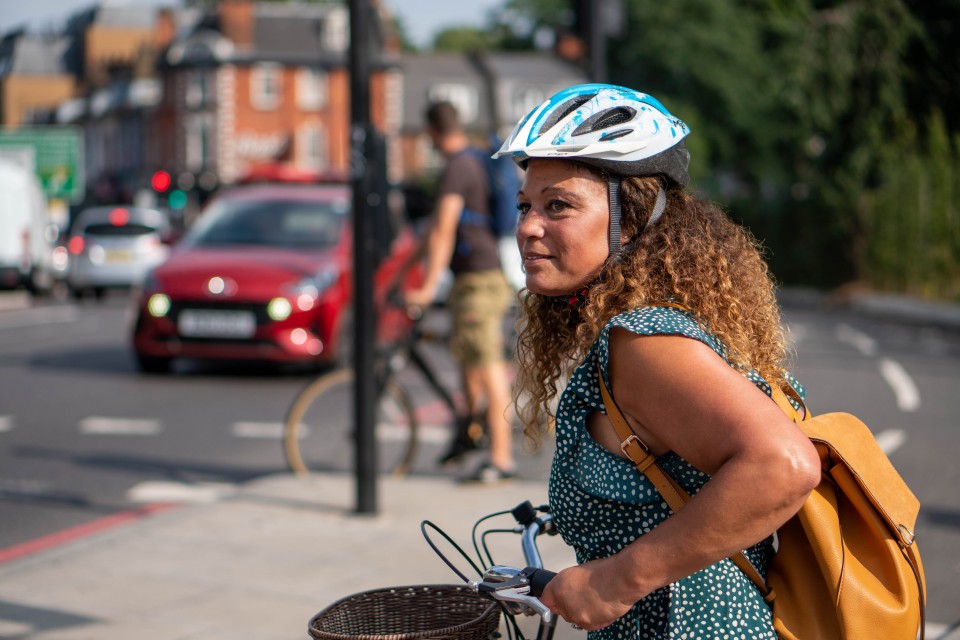
Published Wednesday 26 January 2022 at 10:34
Highway Code changes this month mean drivers need to give way to people on foot at a junction, while people riding bikes must give way to those on foot when using a shared-use cycle track.
It’s a big step in the right direction as our borough learns about greener car use – or indeed less use of – in everyday life. The research into what creates ‘healthy streets’ for neighbourhoods across the UK has a simple summary – a street or road where everyone feels safe and welcome. This includes vulnerable road users of all ages.
An update to The Highway Code has introduced a hierarchy of road users, which creates ‘clearer and stronger priorities’ for pedestrians, which aims to improve safety for pedestrians, cyclists and horse riders.
The changes are due to come into force on 29 January.
How has The Highway Code changed?
- Drivers of large passenger vehicles and HGVs now have ‘the greatest responsibility to reduce the danger posed to other road users’
- Drivers at a junction should give way to pedestrians crossing or waiting to cross a road that they’re turning into
- Drivers should give way to pedestrians waiting to cross a zebra crossing, and pedestrians and cyclists waiting to cross a parallel crossing
- Cyclists should give way to pedestrians that are using shared-use cycle tracks
- Drivers should not cut across cyclists going ahead when turning into or out of a junction or changing direction or lane
- New ‘Dutch Reach’ technique tells road users how to open the door of their vehicle while looking over their shoulder
Three new rules added to The Highway Code Rule
H1: hierarchy of road users
The first (and most significant) rule in the refreshed Highway Code sets out the hierarchy of road users. Road users who can do the greatest harm (those driving large vehicles) have the greatest responsibility to reduce the danger they pose to other road users. Pedestrians (children, older adults and disabled people in particular) are identified as ‘the most likely to be injured in the event of a collision’.
Here’s a look at what the hierarchy of road users looks like:
- Pedestrians
- Cyclists
- Horse riders
- Motorcyclists
- Cars/taxis
- Vans/minibuses
- Large passenger vehicles/heavy goods vehicles
As you can see, cyclists and horse riders will also have a responsibility to reduce danger to pedestrians. Even so, the updated The Highway Code emphasises that pedestrians themselves still need to consider the safety of other road users.
The Department for Transport says this system will pave the way for a ‘more mutually respectful and considerate culture of safe and effective road use’.
Rule H2: clearer and stronger priorities for pedestrians
This rule is aimed at drivers, motorists, horse riders and cyclists. The Highway Code now states clearly that, at a junction, you should give way to pedestrians crossing or waiting to cross a road that you’re turning into. Previously, vehicles had priority at a junction.
Drivers should also give way to pedestrians waiting to cross a zebra crossing, and pedestrians and cyclists waiting to cross a parallel crossing (a combined pedestrian and cycle crossing).
Meanwhile, cyclists should give way to pedestrians on shared-use cycle tracks, and are reminded that only pedestrians (including those using wheelchairs and mobility scooters) can use the pavement. Pedestrians are allowed to use cycle tracks unless there’s a road sign nearby that says doing so is prohibited.
Rule H3: drivers to give priority to cyclists in certain situations
The updated The Highway Code urges drivers and motorcyclists not to cut across cyclists when turning into or out of a junction or changing direction or lane. This rule applies whether the cyclist ahead is using a cycle lane, a cycle track or simply riding on the road ahead. Drivers are meant to stop and wait for a safe gap when cyclists are:
- Approaching, passing or moving away from a junction
- Moving past or waiting alongside still or slow-moving traffic
- Travelling on a roundabout
Rules H1, H2 and H3 aside, there are some other changes to The Highway Code in 2022.
The ‘Waiting and parking’ chapter of The Highway Code has been updated to describe the ‘Dutch Reach’. This suggests you should open your door using your hand on the opposite side to the door you’re opening. So, you would use your left hand to open a door on your right side – this naturally makes you turn your head to look over your shoulder.
Electric vehicle owners are being reminded that the charging cables for their cars can present a trip hazard for pedestrians.
Recently Blackburn with Darwen’s Assistant Executive Member for Growth and Development Cllr Zainab Rawat called on local drivers to think green and reduce their engine idling – particularly around schools where it causes air pollution in playgrounds. Read more:
Driving a greener future | Blackburn with Darwen Connect (bwdconnect.org.uk)
If you’d like to take part in designing healthy streets for our borough there is an open consultation you can complete: Consultation: Walking and cycling | Blackburn with Darwen Borough Council
And there is a Facebook group you can join to stay up to date with what’s happening Connect BwD | Groups | Facebook
Filed under : healthy streets | highway code | road safety | safer roads
